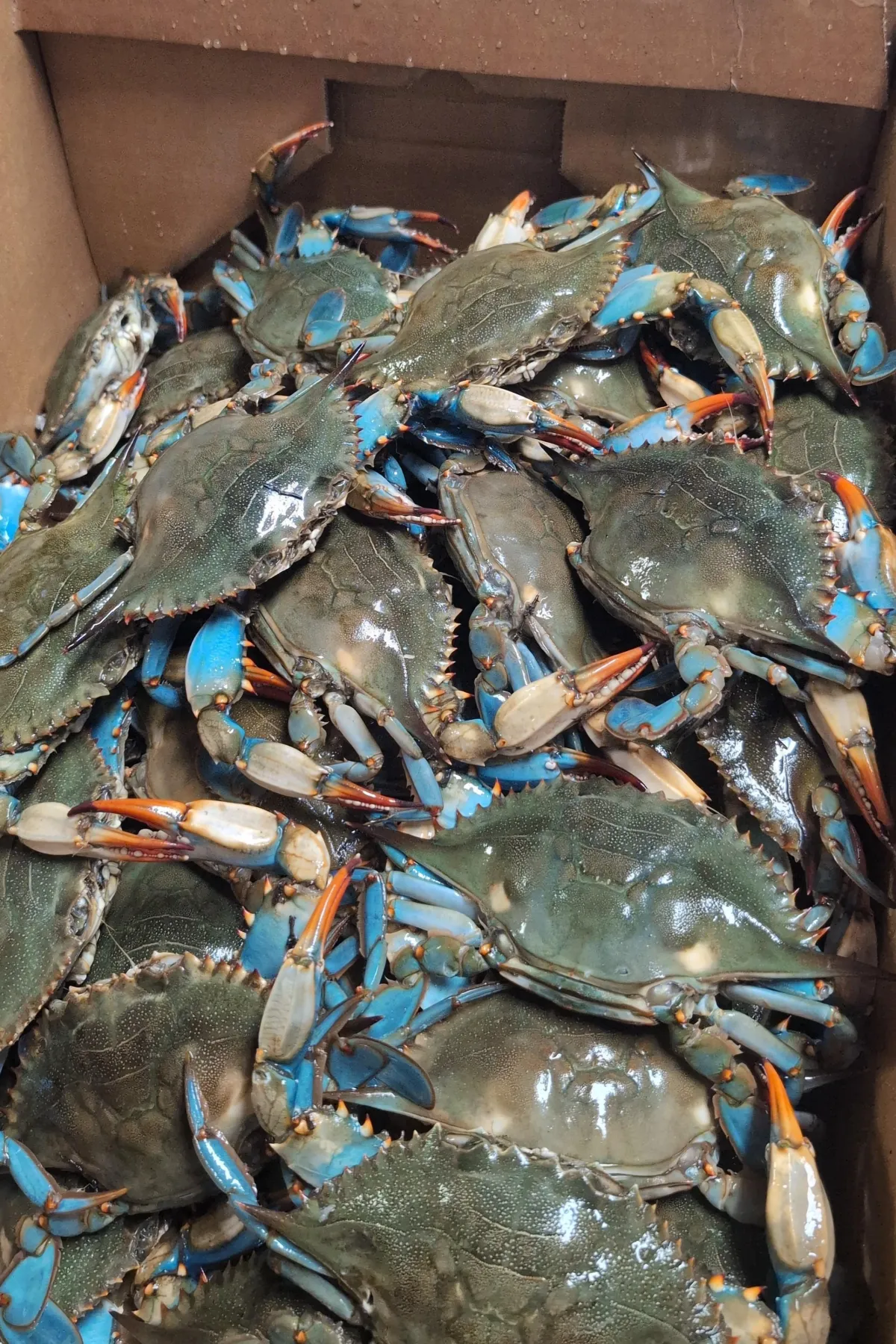
Male Female Blue Crab -
🦀 Male vs. Female Blue Crabs: What’s the Difference?
If you’ve ever picked up a blue crab and wondered, “Is this a boy or a girl?” — you’re not alone! Whether you're crabbing for fun or prepping for a boil, knowing the difference between male and female blue crabs can help you understand their behavior, legal limits, and even taste preferences. Let’s break it down! 👇
🔍 Physical Differences
🧔 Male Blue Crabs (Jimmies)
Key Features:
Claw Tips: Bright blue claws 💙
Underside Apron: Shaped like the Washington Monument (long and narrow)
Size: Typically larger than females
Color: More vibrant blue overall
👩 Female Blue Crabs (Sooks)
Key Features:
Claw Tips: Red or orange-tinted tips ❤️🧡
Underside Apron: Shaped like the Capitol Dome (rounded and wide)
Size: Usually smaller than males
Color: Slightly duller blue with reddish accents
🧠 Behavioral Differences
🧭 Migration & Mating
Females migrate to saltier waters to spawn after mating.
Males stay in brackish waters and guard females during mating.
🥚 Egg Carrying
Females carry fertilized eggs in a sponge-like mass under their apron.
These “sponge crabs” are often protected by harvesting regulations.
🦀 Taste & Texture
Some crab lovers say female crabs have sweeter meat.
Males tend to have more meat due to their larger size.
⚖️ Legal & Ethical Notes
In many areas, harvesting egg-bearing females is illegal or discouraged to protect crab populations.
Always check local regulations before crabbing! 🧾
🧺 Final Thoughts
Whether you’re crabbing for sport or supper, knowing the difference between male and female blue crabs helps you make smarter, more sustainable choices. Plus, it’s just cool to know what you’re working with! 🦀💡
